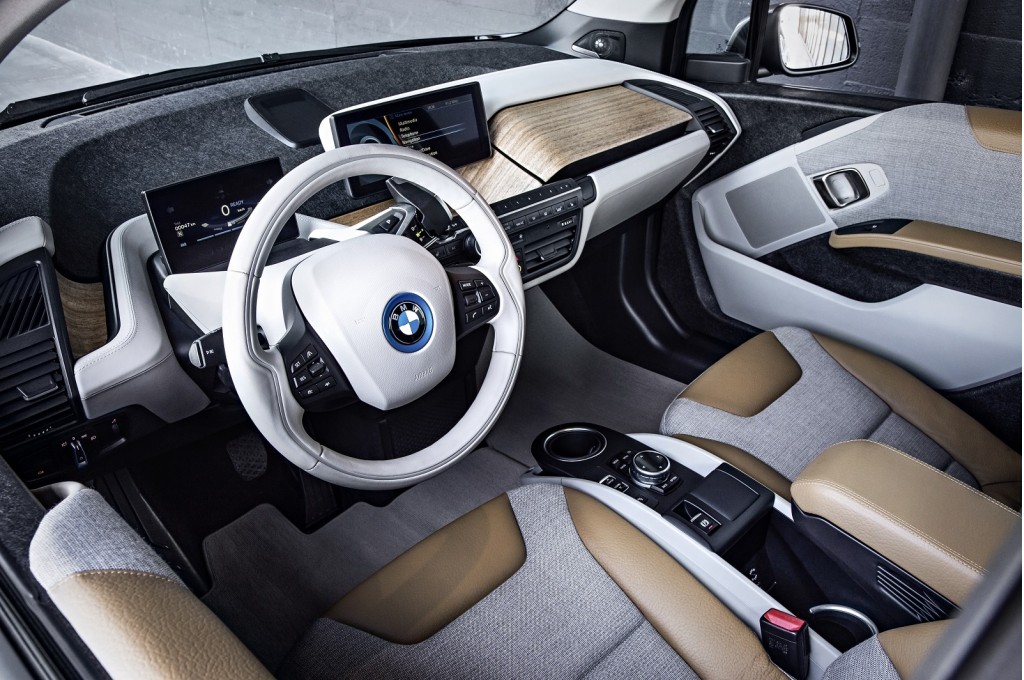If the Chevrolet Volt was General Motors’ moon shot, the BMW i3 and i8 are that company's joint mission to Mars.
The German automaker is now traveling around the world to promote two completely new vehicles, two cars radically different from anything it's offered to date.
The higher-volume small city hatchback, the 2014 BMW i3 battery electric car, will be followed by a plug-in hybrid sports car, the BMW i8.

2014 BMW i3 Electric Car: Connectivity, Navigation Highlights
By themselves, they have other upcoming green cars in their sights. Together, they're trying to do nothing less than redefine the idea of premium cars as a whole.
But sometimes big ideas don’t garner big results in the automotive industry.
Both the i3 and i8 are impressive technological exercises--but in the real world, could they be defined more by their compromises than their revolutionary attitude?
A new kind of luxury
The BMW i3 was unveiled in late July with a spec sheet meant to excite green enthusiasts--and perhaps confuse people who think the perfect small luxury car is a 3 Series.
The i3 sports a one-box silhouette with a body shell of carbon-fiber reinforced plastic, a rear-mounted electric motor (with or without an optional tiny range-extending engine), and tall, thin 155/70 tires on 19-inch wheels.
Inside, recycled eucalyptus wood veneer and a new-age fiber called Kenaf that’s made from recycled plants replace glossy wood and leather.
Other than the twin-kidney badge, the i3 has nothing in common with any other BMW--yet it appears the company hopes buyers will view it the same way.

2014 BMW i3
Premium pricing, limited range
It’s a premium vehicle positioned against other premium vehicles, not mass-market electric cars under the critical $35,000 price point--like the Nissan Leaf.
That assumption will be tested when potential buyers see the car’s $42,275 (before government incentives) base price, though.
Is there an audience for BMW’s new, eco-friendly version of luxury and performance?
Or will the i3 electric car suffer from what you might call "Chevy Volt syndrome," in which the perception of a $40,000-plus price for a compact four-seat car hurt its public image?
The i3 also has another challenge; the Volt is not range-limited, but it is--most likely to 80 to 100 miles--and it remains unclear whether its optional range extender will provide performance equal to that of its battery pack.
Will fat incentives end up being required for the BMW i3 too, to generate and maintain sales momentum?
Can a green car still perform like a BMW?
It’s a variation of the same story with the BMW i8. Not since the M1 has a Bimmer looked so sexy, but under its sleek skin, things are a bit more convoluted.

2015 BMW i8 prototype

2015 BMW i8 prototype
It features a 1.5-liter turbocharged in-line-three-cylinder engine plus an electric motor, each of which can operate separately to propel the car. Or, they can work together to drive all four wheels for maximum performance.
Total system output is 362 horsepower and 420 pound-feet of torque, enough to get the i8 from 0 to 60 mph in 4.5 seconds. Top speed will be 155 mph, according to BMW.
However, take the electric motor out of the equation and the i8 only has 231 hp. Turn off the gasoline engine, and it can only go 75 mph.
How and whether that will be perceived as purist-style performance is, as of yet, the big unknown.
Showroom reckoning
BMW may have the right idea--hedging its bets by spreading its green-car efforts over two different market segments, with more reportedly on the way as well.
But might it just as easily be missing the mark, by building two very advanced cars that few of its traditional customers will actually want to buy?
Leave us your thoughts in the Comments below.
_______________________________________________












